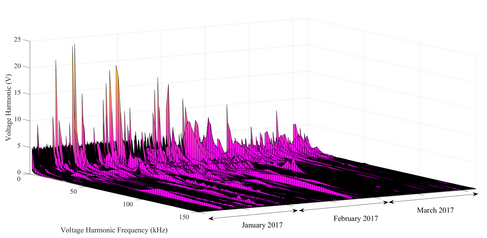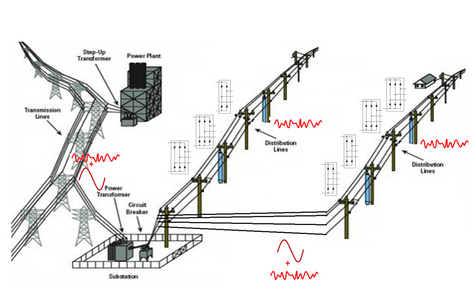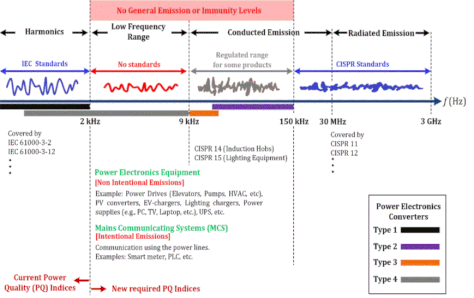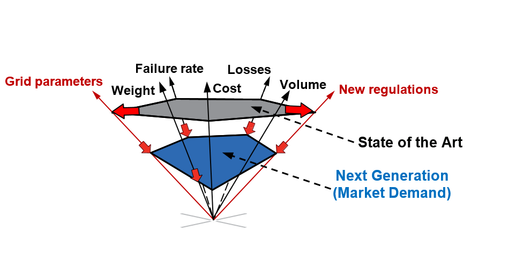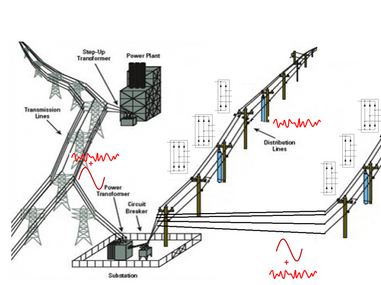GREEN Lab
Grid Robustness and Energy Efficiency of Networks (GREEN) Lab
Main research and technology projects and activities:
- System analysis, modelling and simulation
- A comprehensive power quality measurement and data analysis
- Energy Efficiency Improvement of advanced power electronics systems using WBG devices
- 2-150 kHz supra-harmonics at device and system levels
- Grid connected renewable energy systems (stability and quality control)
- IEC Standardization: Power Quality and Harmonics (TC77, WG1 and WG9)
- Finite Element modelling and simulation
Power Quality Monitoring of Grids with High Penetration of Power Converters
Abstract:The project aims to monitor and analyse power quality of grids within the frequency ranges of 0-2 kHz (existing regulations) and 2-150 kHz (new regulations). Power quality of grids deteriorate due to high penetrations of inverter based renewable energy systems. To estimate power quality of grids, a multi-domain simulation model based on grid configurations and operating conditions will be developed in this project. Developed methodologies will assist network service providers to better analyse harmonics and resonances within low and high voltage power systems and further support them to develop new planning guidelines and regulations to address power quality of grid connected solar inverters and wind turbines.
50%
Industry Partners
Utility campanies and and power quality manufacturers in Australia and Germany
50%
Competetive and other research funds
ARC Linkage Project
Addressing Challenges for the Future Grids - Harmonics Standardization
Due to the global demand for energy saving and reduction of greenhouse gas emissions, utilization of renewable energy sources and efficient loads based on power electronics technology is increased in electricity networks. The negative aspects of this technology are very complex and not well known which affect reliability and robustness of the grids. The main aims of this project are to: a) develop advanced tools for a better understanding of power quality issues of the residential, commercial and industrial distribution networks in Australia b) investigate and develop novel techniques to improve power quality and reliability of the grids c) develop harmonics emission and immunity levels and modify the Australian standards accordingly.
10%
90%
Competetive and other research funds
ARC Future Fellowship
National and international research partners
Aalborg University, Denmark
Curtin University
A comprehensive analysis of common mode and shaft voltages in a three-phase motor drive system
90%
Industry Partners
an international industry partner in Asia
10%
National and international research partners
Curtin University
Standardization and Harmonics
100%
Industry Partners
an international industry partner in Europe
High Quality and Robust Energy Conversion Systems for Distribution Networks
The decreasing price of Wide Band Gap semiconductor devices offers an opportunity to revolutionize the next generation of energy conversion systems, such as in motor drives, solar inverters. However, the generation of high frequency harmonics by these devices affects the reliability, quality and safe operation of grids and grid connected equipment such as smart meters and communication signalling. The main aims of this research project are to protect low voltage distribution networks and reduce the harmonics and Electromagnetic Interference at the grid side. Further, the project aims to improve quality and efficiency of power converters through device level optimization with utilization of Wide Band Gap devices and multi-level topology.
50%
Industry Partners
Danfoss Drive Companyand Aalborg University in Denmark
50%
Competetive and other research funds
ARC Linkage Project
Power Quality of Future Electricity Networks
Global International Linkage grant 2020-2023
Several power quality issues and high frequency disturbances (2-150 kHz) have
been reported in distribution networks around the world such as:
- Communication and signalling errors such as ripple control signal and PLC
- Errors in testing and measuring equipment such as smart meters
- Unpredicted resonances in LV and MV
- Tripping solar inverters
- Failures of distribution transformers and cables
- Malfunction in equipment such as medical and security systems and UPS
- Shorter lifetime of diesel generators due to unwanted harmonics
The aims of this project:
- Development and testing new models of low voltage power grids
- Develop new harmonic models for low voltage grid equipment where significant distributed energy sources are connected
- Develop grid impedance detection techniques utilising new harmonic models
- Development of state estimation technique for harmonics in low voltage grid with high penetrations of renewables.
